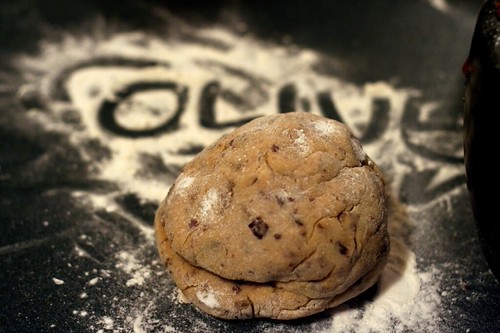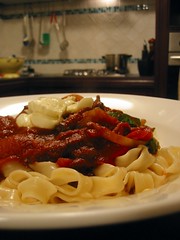What is wrong me ? Seriously. I have been looking back at photos on my computer this evening and it’s criminal the amount of things I have taken photos of, loved, absorbed as part of my very being, and then promptly forgotten to write about.
One such occasion was a couple of years ago in a small kitchen at my dear friend Alex and Linda’s place in Inglewood. When Linda’s parents announced that they would be making gnocchi. What this meant in reality was a full scale production that would take over the majority of the house and end up preparing enough food to feed a small army.
The menu was simple. Gnocchi, and red sauce. Now I’m not sure Italians are necessary well known for understatement, but “red” was by no means the defining quality of that sauce. Of course the people preparing the mean were no ordinary hosts. Italo and Grazia have a love of food and hospitality engrained into their very fibre. At home in Adelaide Italo makes his own sausages, grows every kind of vegetable under the sun in his backyard, and has a cellar full of wine that he’s made himself.
I was fortunate enough to be adopted into the family that day, as we fed mounds of freshly boiled potatoes through the ricer and Italo methodically worked in just enough eggs and flour for the mixture to bind into a light smooth dough. Then the real work began. As Italo rolled out long thin logs of dough and swiftly flicked off bite sized pieces for Alex, Linda, and I to roll down the back of the gnocchi board.
All the while Grazia stirred a giant pot of “red” sauce that constantly evolved with each thing added to it. First went in chicken drumsticks, then a rolled fillet of pork (maybe beef), then a deceptively simple rolled egg omelet, then a couple of rolls of thick slices of pig skin with a layer of stuffing on top made from breadcrumbs, garlic, parsley and egg.
The sauce bubbled away for a couple of hours absorbing all the delicious flavours from the meat and then we gingerly slid the now multiple trays of pillowy gnocchi into another big pot of salty water. As they slowly started to float their way to the surface Grazia would scoop them out and into a large bowl ready to be mixed with spoonfuls of the sauce.
Italo fished out the meat from the sauce and sliced it all up and onto a platter. This would be the traditional style of eating, with the first plate being the gnocchi, and the second plate being the meat and a light salad.
I’m going to let the photos do the rest of the work because my meager superlatives can’t really do justice to just how wonderful this meal was.
To make this less of a gloat fest, I may as well include a recipe for the gnocchi themselves. Italo’s basic recipe for the gnocchi dough was 250 grams of flour to 1 kilo of potatoes, two eggs, and salt. Boil the potatoes and then feed them through a ricer, before very gently mixing the flour, eggs, and salt in. Try not to overwork the dough as the more you activate the gluten in the flour, the harder the gnocchi will become. When the dough is smooth and firm, roll it into small logs and cut into bite sized pieces.
The gnocchi board isn’t essential, you could just use the back of a fork if you wanted to. The idea is to give the gnocchi some texture that the sauce will grip onto, but I think most sauces do a pretty good job of gripping on their own.
Most importantly, invite some good friends to help you, don’t attempt it on your own or you’ll wonder what the hell you’re going to all this effort for. Food as good as this deserves great company.

















































































